Organizing clothing can be tricky because there's no one-size-fits-all solution that works for your entire wardrobe. Although it might be tempting to throw everything on a hanger, different types of clothes require unique organization methods for the most effective storage. Your knit sweaters, for example, won't be organized in the same way as your dresses or socks. To keep your clothes as neat and accessible as possible, you'll need to use a variety of clothing organization ideas for garments and accessories.
Whether you're organizing clothes within a closet, dresser, or wardrobe, it's important not to cram too many pieces into a tight space. This leads to wrinkles and makes it more difficult to see the full range of your clothing options when you're picking out an outfit. For that reason, open storage solutions, such as hanging clothes or organizing garments on shelves, are generally best for the main components that make up an outfit, including pants, sweaters, blouses, and dresses. If your full wardrobe is easily within view, you're less likely to end up wearing the same couple of pieces over and over again. On the other hand, items like socks, undergarments, and other accessories are best stored in drawers or bins, which keep them contained and hidden away if desired. Use these tips on how to organize clothing to keep your wardrobe tidy and ready to wear.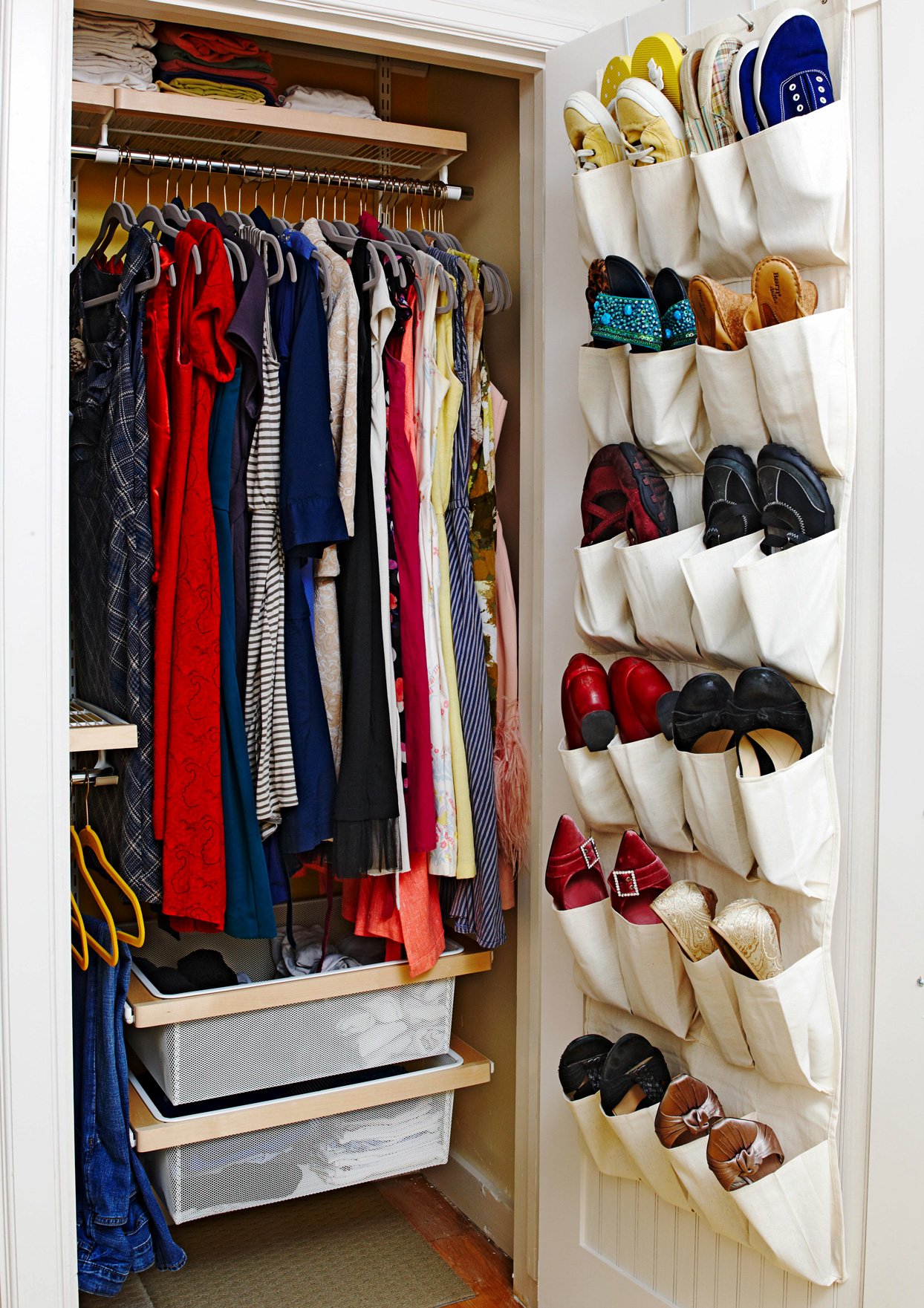
1. Edit Your Wardrobe First
Clothes retain their good looks longer when stacked neatly or hanging freely. But before you begin organizing clothes, create breathing room in closets and drawers by editing your wardrobe. Consider donating apparel that hasn't been worn in a year, no longer fits, is too damaged to repair, or is decidedly never coming back into style. Install closet systems, over-the-door racks, and drawer organizers to keep your remaining garments in tidy order.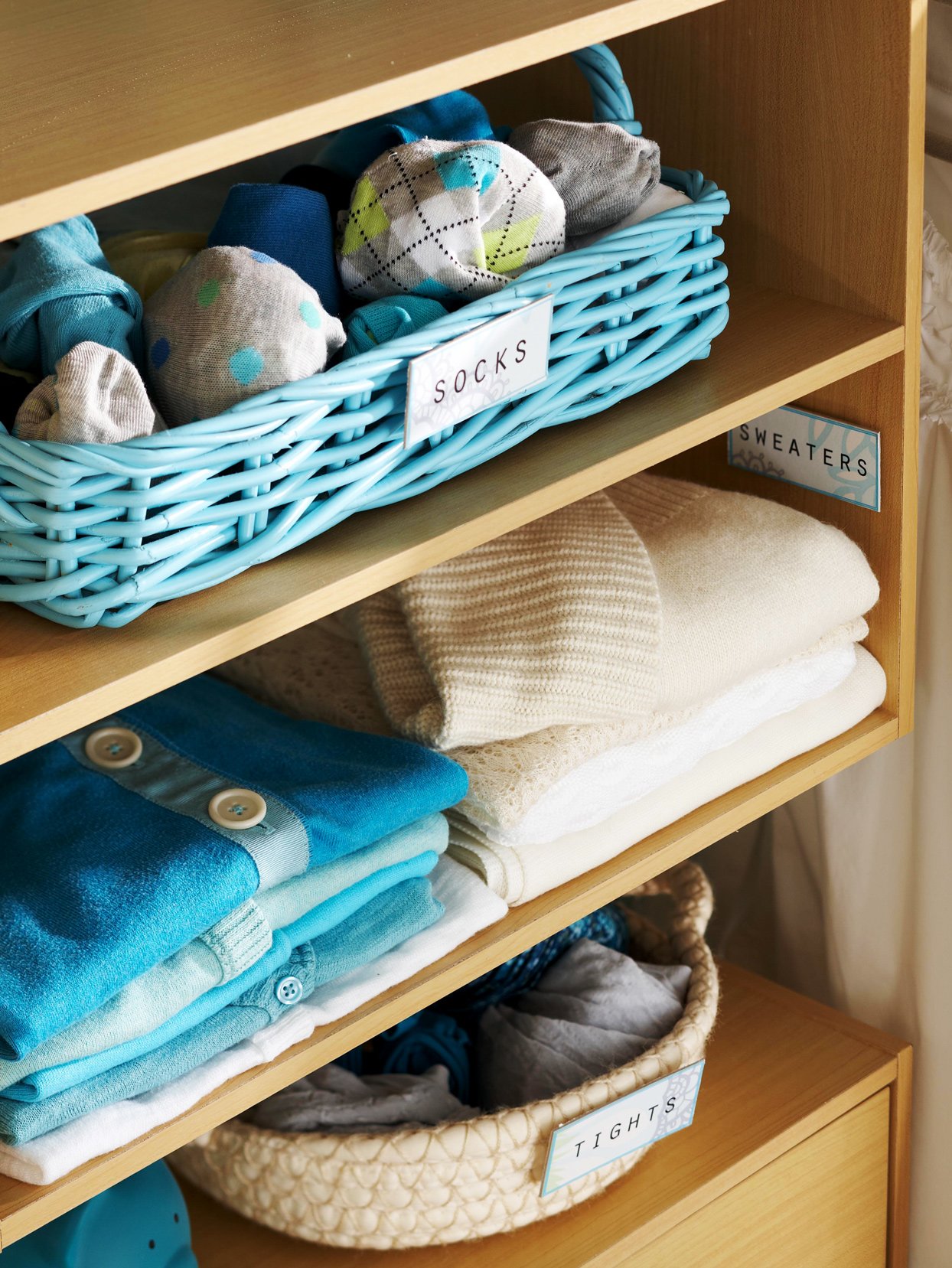
2. Organize Garments Like Sweaters and Jeans in Plain Sight
Unlike dressers or armoire drawers, bookcases and open shelves let you quickly see and retrieve what you need. This clothing organization idea works well for jeans, T-shirts, sweaters, and other garments that don't need to be hung. Move a bookcase into a closet to hold stacks of foldable items, organized by type. Equip a few shelves with colorful labeled baskets that corral socks and delicates.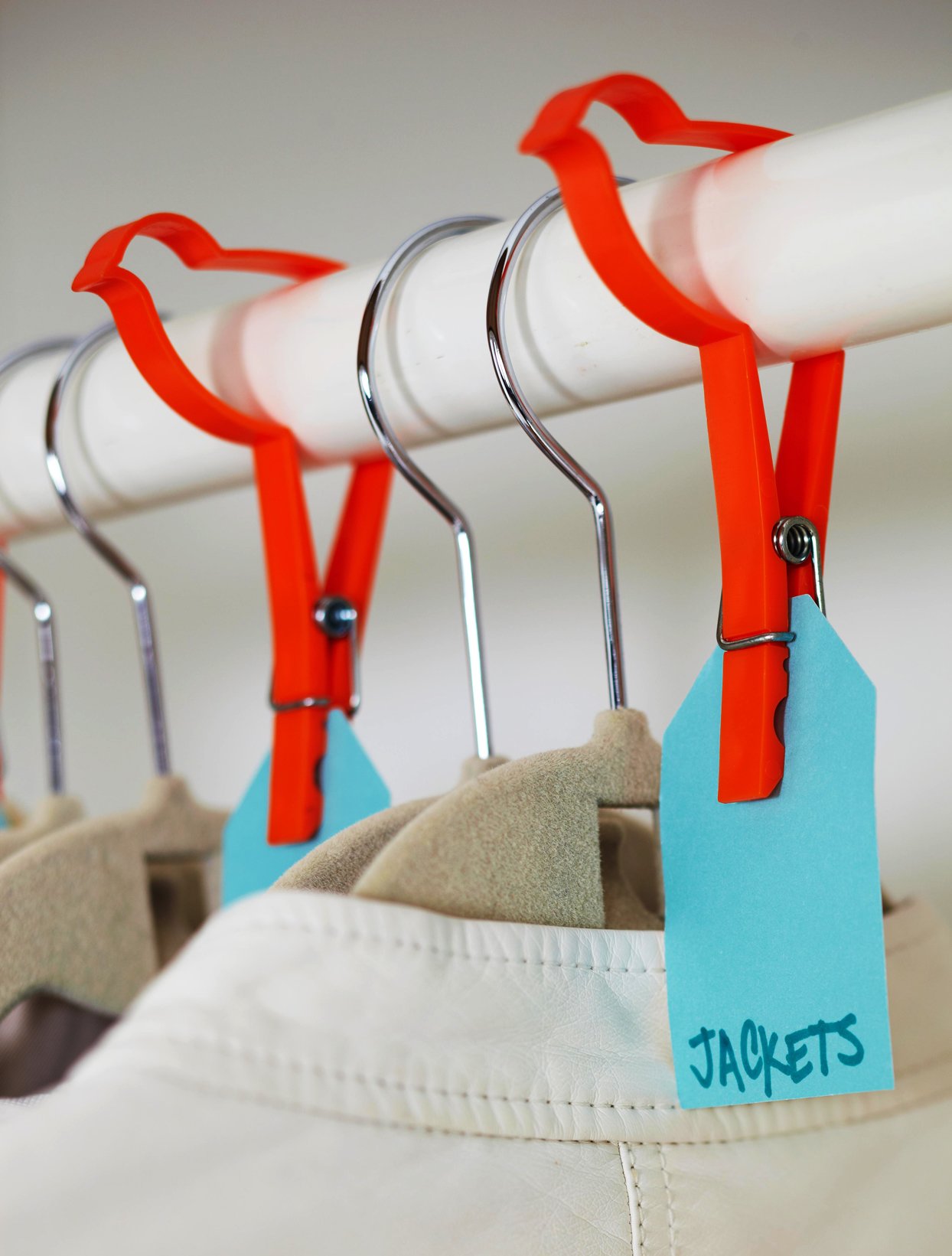
3. Divide Hanging Clothing by Category
Create a closet-rod labeling system that tells you what goes where so you can easily find what you're looking for then return it to its proper space. Storing similar items, such as jackets or button-down shirts, together streamlines clothing storage and stops you from stuffing too much in one spot. This also prevents other garments from falling off hangers or becoming wrinkled. Repurpose drapery-rod clips ($9, Target) to display handwritten tags that define different clothing sections.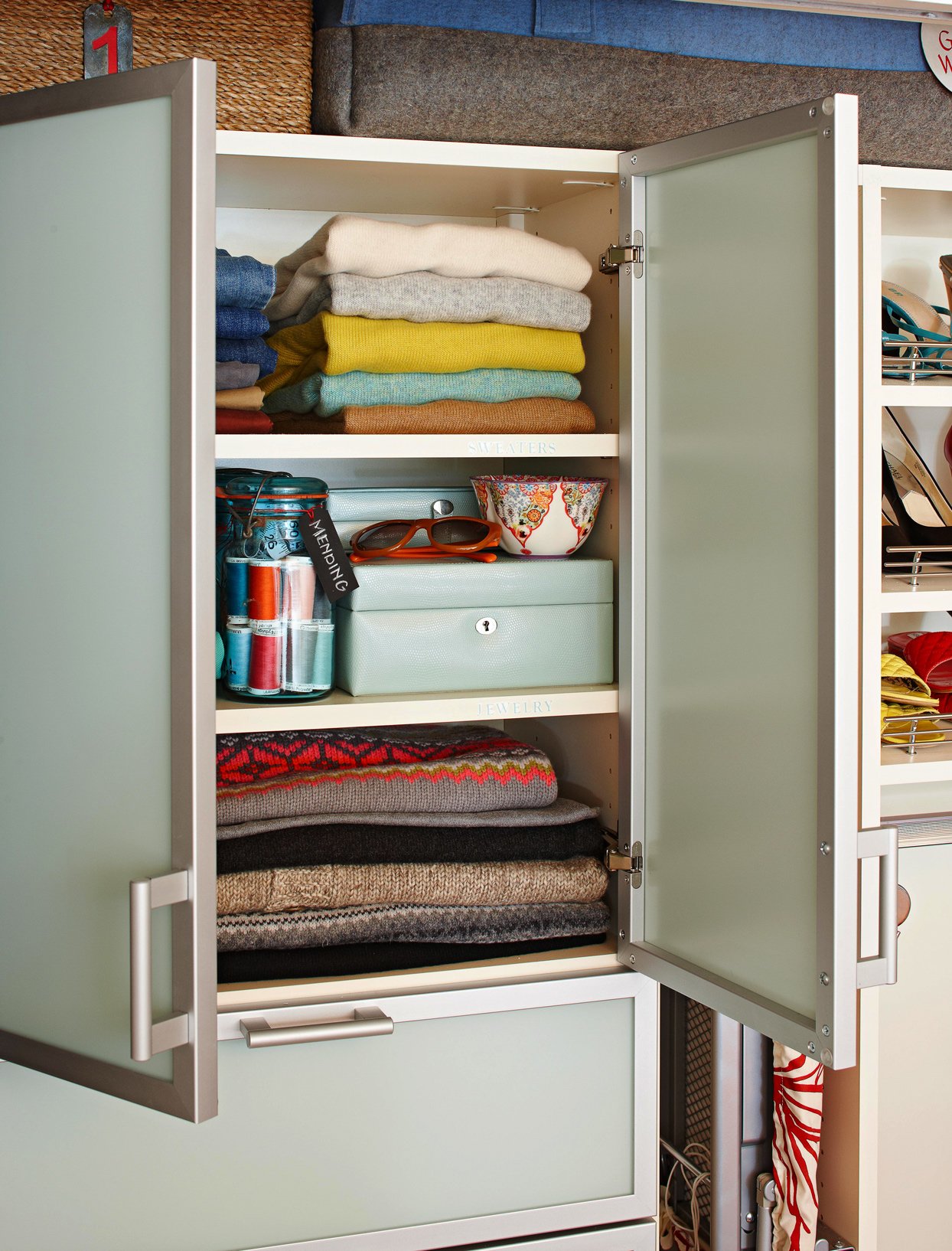
4. Stash Mending Tools Nearby
Organize clothes and the tools needed to keep apparel looking its best in the same spot. You're more likely to replace lost buttons, stitch a falling hem, or press a blouse when a mending kit, button jar, and iron and board are nearby. Being able to tackle these quick fix-ups ensures that no flawed or rumpled garment languishes unused in your closet.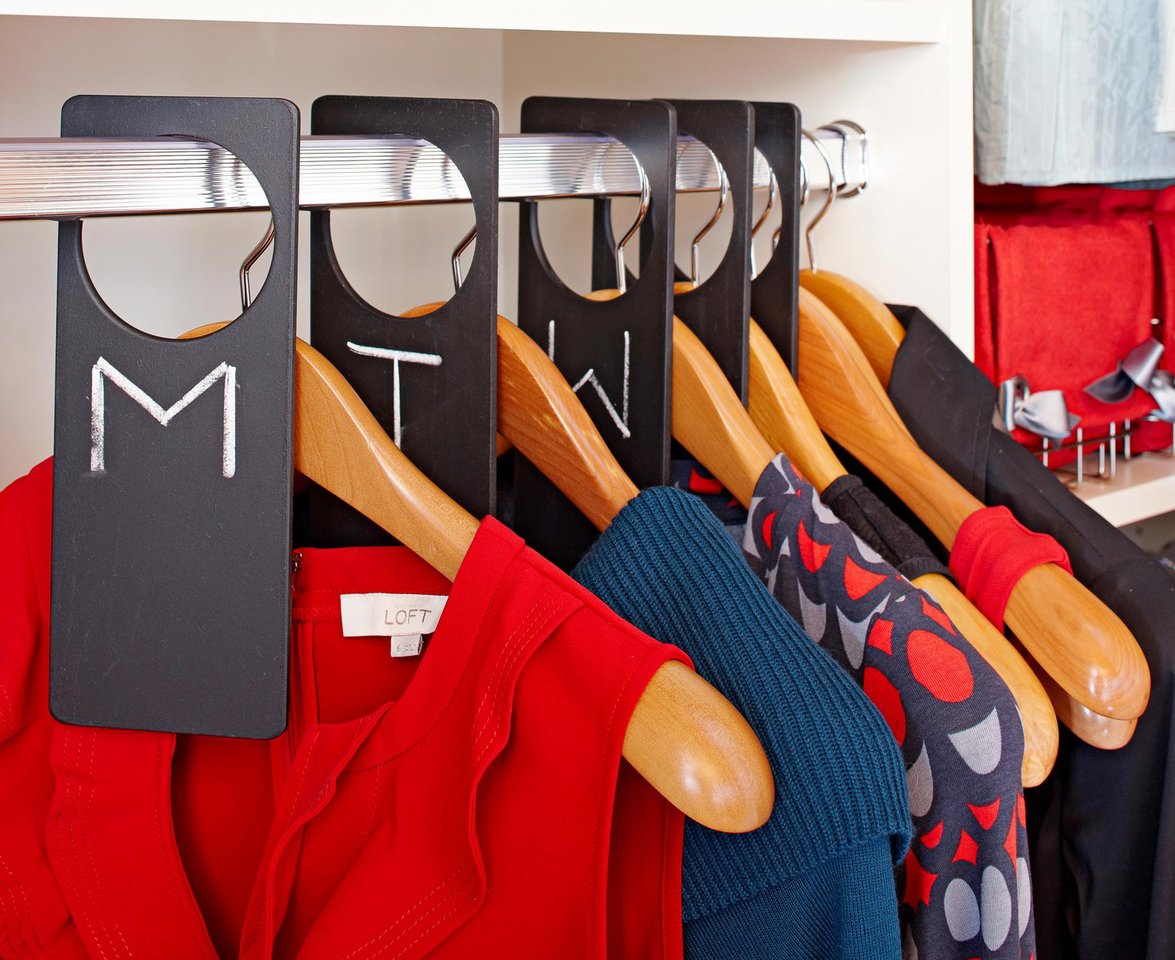
5. Keep Your Best Attire on Wood Hangers
Hang your best garments, such as dresses, jackets, and delicate blouses, on wood hangers ($10, Bed Bath & Beyond). These large, sturdy hangers help clothing pieces hold their shapes in storage. To streamline your morning routine, organize a week's worth of outfits by separating hanging clothes with day-of-the-week dividers. This handy sorting system lets you pre-check garments, giving you time to clean spots or repair flaws before Monday rolls around, and makes it easy to dress and dash on busy mornings.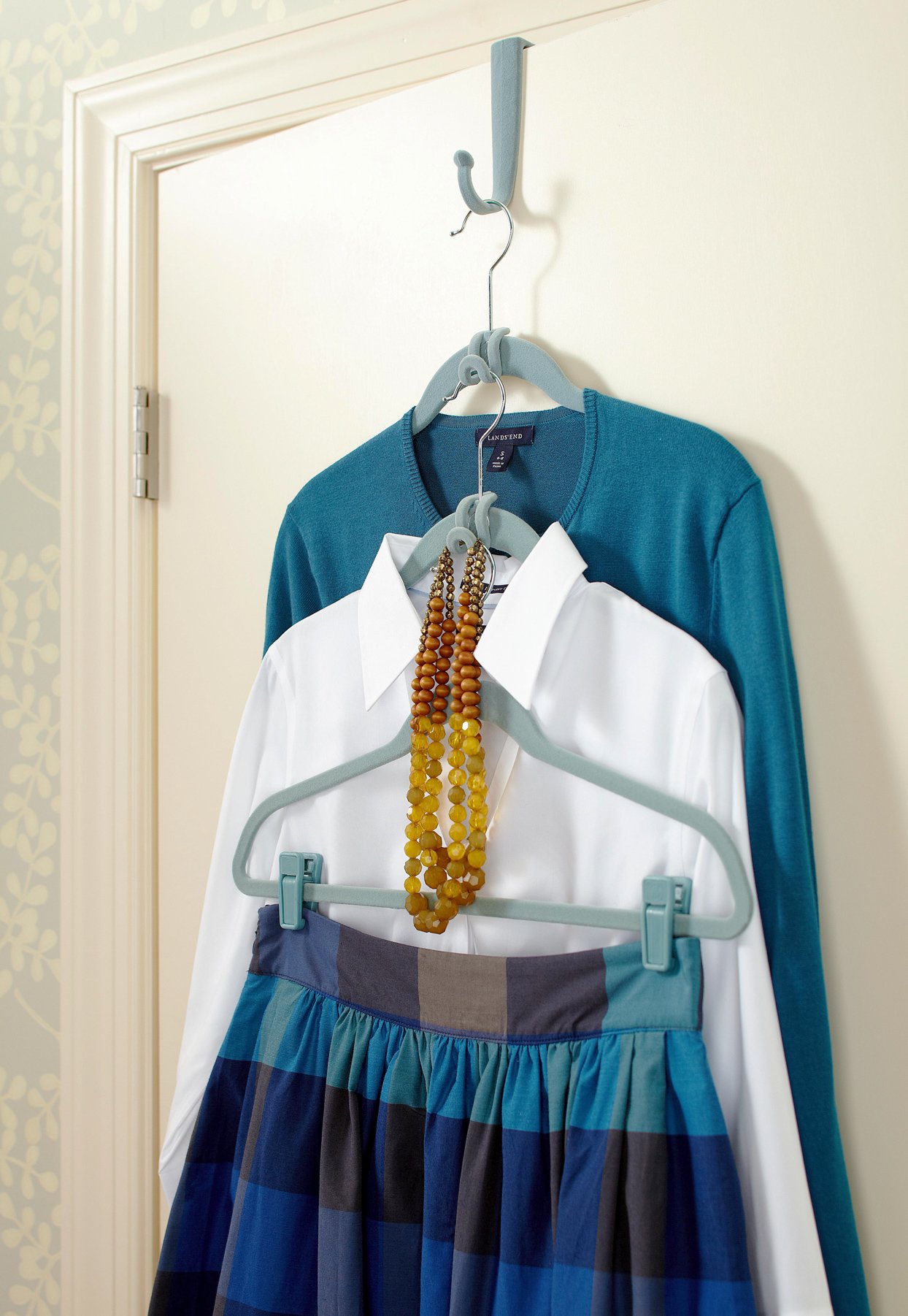
6. Plan Outfits on the Back of a Door
Use the back of a door to expand your clothing storage space beyond the closet. Employ over-the-door hooks, shoe bags, and multi-hook racks to temporarily hold freshly ironed outfits, contain ball cap collections, and hold heavy items, such as robes or coats, that are worn daily. Alternatively, add a pegboard to the front or back of a door so you can use hooks to organize smaller accessories such as scarves, neckties, and belts.
7. Customize Closet Organization
Boost the storage capabilities of your closet by incorporating a variety of buyable clothing organizers. Customizable closet systems, specialty racks and hangers, storage bins and baskets, shelf dividers, drawer organizers, and hanging compartmentalized bags can all help optimize clothes storage. Personalize storage systems by using vintage hat boxes, suitcases, and even planters to beautifully corral rarely-used clothing, fashion accessories, and out-of-season apparel.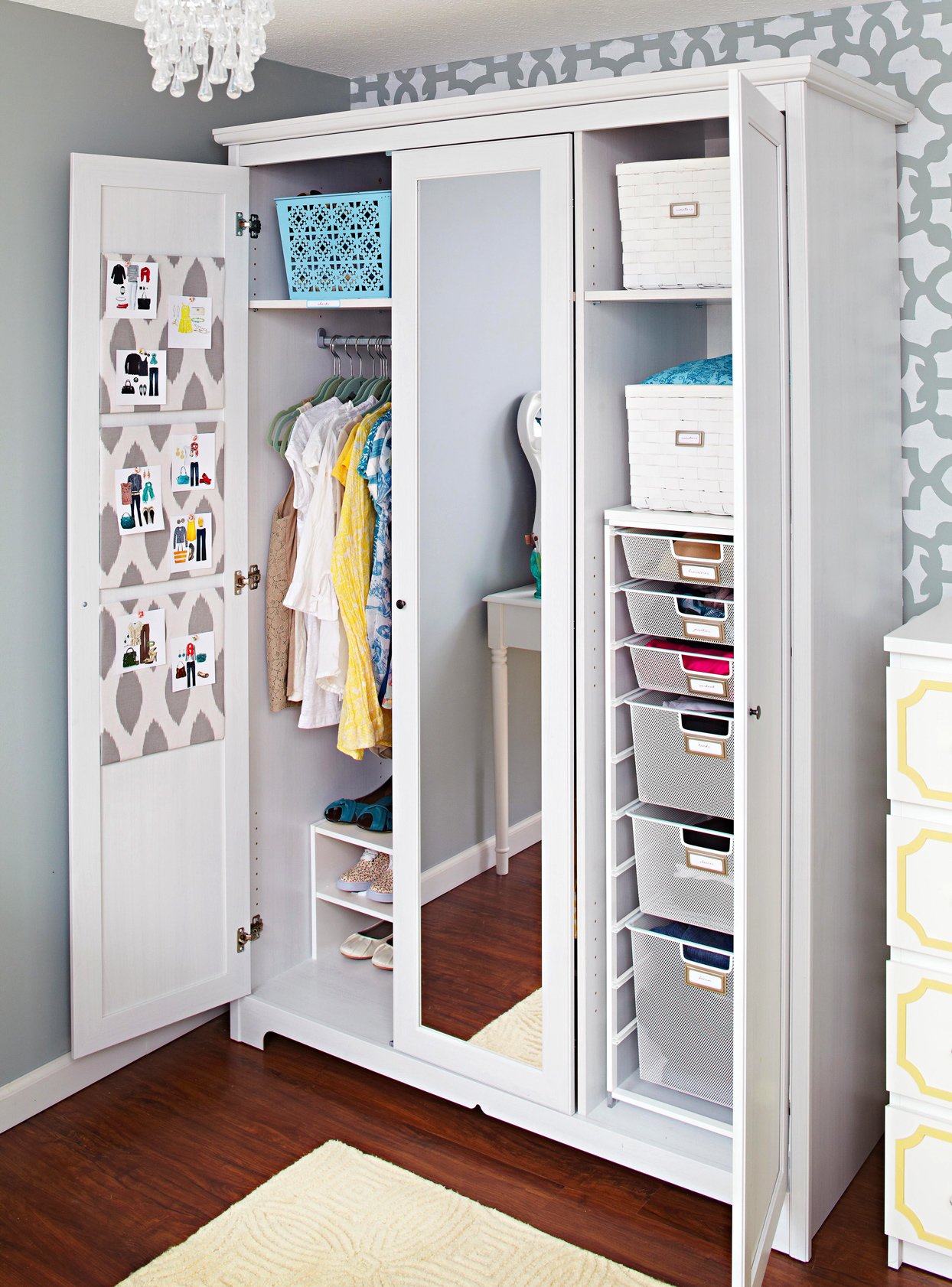
8. Organize Clothes in a Freestanding Wardrobe
Increase clothing storage by utilizing an antique armoire or a spacious wardrobe, which you can find at a variety of price points and in numerous styles. Outfit the cabinet's interior with modern bin storage systems and closet rods situated at heights that suit both hanging clothes and ease of access. Tuck in shoe racks and storage bins as space allows. To make planning outfits easier, showcase sketches on door-hung bulletin boards that remind you how to pull together your favorite looks.
9. Adapt Clothing Storage for Kids
Little ones have smaller clothes, which means you can fit more clothes inside a closet. Opt for multitier systems featuring dual rods, with the lower one used to sort clothes by day-of-the-week closet dividers. Stencil, paint, or sketch an image of what's inside each drawer or bin so kids can readily identify what's stored where.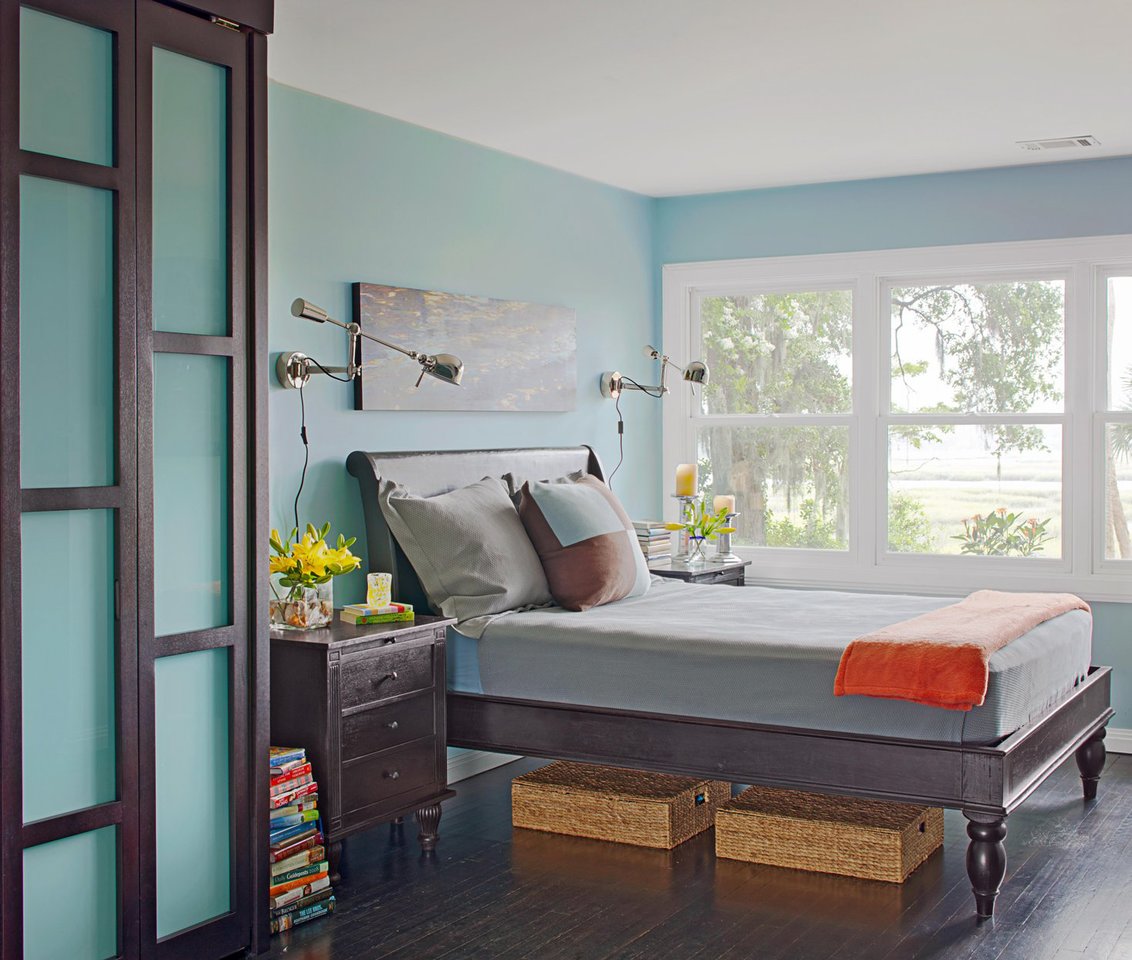
10. Organize Seasonal Clothing Under the Bed
Underbed organizers, such as plastic boxes, fabric bags, wire racks, and wooden drawers, provide a variety of clothing organization and storage options. Ideally suited to hold folded sweaters, jeans, extra robes, or balled up socks, they can also be used to hold out-of-season clothing, such as swimsuits or winter scarves. Look for options with shoe-organizer inserts. Moving shoes out of your closet can create a tidier look and open up more space for storing clothes.



![A Tranquil Jungle House That Incorporates Japanese Ethos [Video]](https://asean2.ainewslabs.com/images/22/08/b-2ennetkmmnn_t.jpg)









